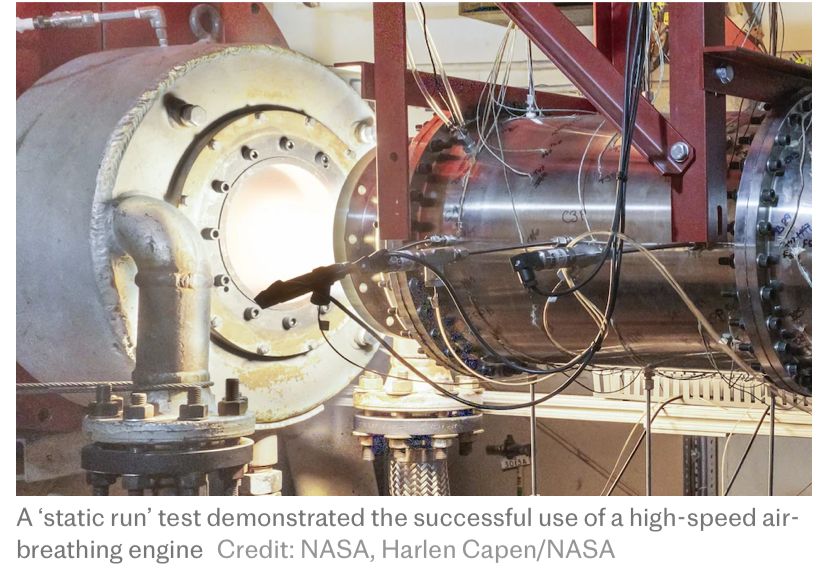Britain has completed a successful test of a new engine for hypersonic missiles in what marks a critical step for defence in Europe.
The latest UK hypersonic research, which could see weapons travelling at several thousand miles per hour, has reached a landmark moment after it was established that the new engine would power a cutting-edge hypersonic cruise missile, covering greater ranges than a conventional rocket.
The engine, which successfully demonstrated the performance of high-speed air-breathing – using air for combustion rather than a separate onboard oxygen device – is set to greatly advance the UK’s hypersonic weapon capabilities.
The Ministry of Defence revealed that the research, which took place in recent months,aims to support delivery of a hypersonic weapon technology demonstrator by 2030 through the department’s Team Hypersonics (UK) programme.
It said the engine will provide a transformational capability that delivers operational advantage for the future UK armed forces.
As part of a joint team led by the Defence Science and Technology Laboratory (Dstl) and the US Air Force Research Laboratory, 233 successful static test runs were conducted at the Nasa Langley Research Centre in Virginia, USA.
The testing was part of the UK’s Hypersonic Weapons Programme, which took place over six weeks involving real-time data analysis to refine design aspects and boost propulsive performance, with support from industry partners including UK SME Gas Dynamics Ltd.
The Telegraph last year revealed that under the previous Conservative government, Britain planned to equip the Armed Forces with a home-grown hypersonic cruise missile by the end of the decade.
To fight adversaries, a missile that could reach speeds exceeding March 5 was desired to catch up with China, Russia and the US.
John Healey, the Defence Secretary, said: “We are living in a more dangerous world and it has never been more important for us to innovate and stay ahead of our adversaries, equipping our forces with the technologies of the future.
“This milestone moment on hypersonics research, supported by British scientists and British small businesses, demonstrates another crucial area where we are working in lockstep with the United States to bolster our Armed Forces and strengthen our deterrence.”
Dstl’s chief executive, Paul Hollinshead, described the milestone as a “critical advancement” in the UK’s defence, which “reinforces our standing in the Aukus hypersonic weapon development collaboration”.
“The success of these tests highlights the UK’s commitment to technological leadership and innovation in this crucial area,” he added.
At the end of last year, the UK, the US and Australia reached a deal to accelerate the delivery of “battle-winning” hypersonic missiles.
Under the second pillar of the Aukus submarine pact, it was agreed that the three nations will develop, build and test projectiles that travel five-times faster than the speed of sound.
The countries are pooling expertise and resources to make sure weapons, launchers and defensive systems are delivered ahead of schedule.

